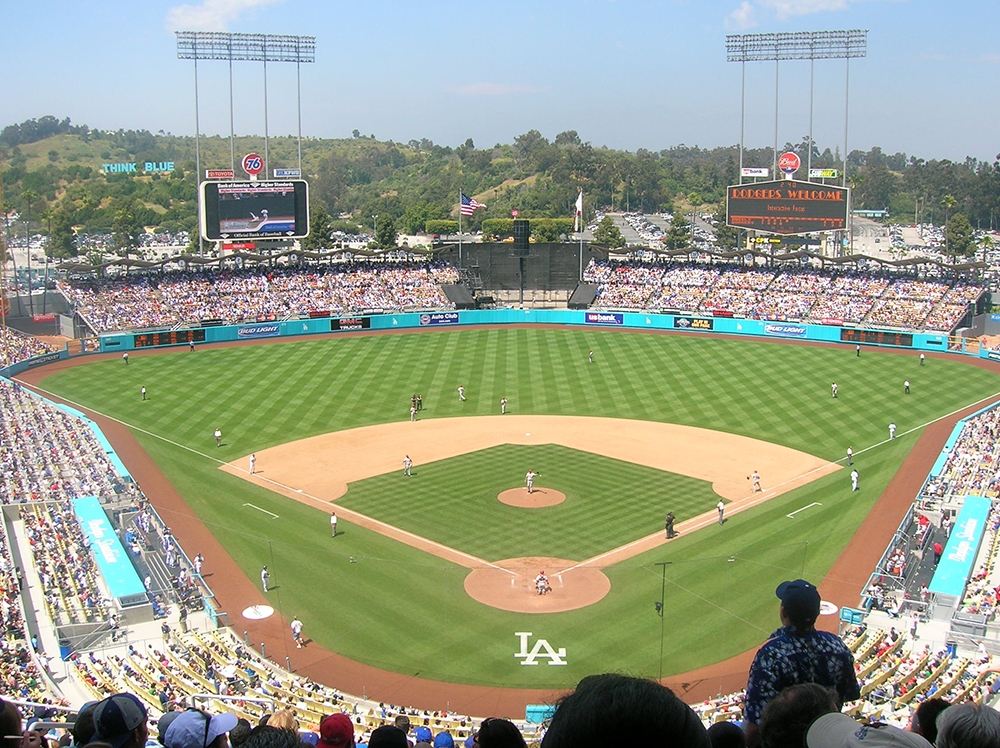Last year, the Los Angeles Rams broke national headlines after the NFL announced the professional football team will be leaving St. Louis for a new $2 billion stadium currently under construction in Inglewood. While the establishment of a new stadium poses exciting prospects for the Rams and loyal fans, local neighborhoods are concerned about the often undiscussed issue of gentrification and its roots in L.A. sports history.
DISPLACEMENT OF COMMUNITIES
According to PBS, “Gentrification is a general term for the arrival of wealthier people in an existing urban district, a related increase in rents and property values, and changes in the district’s character and culture. The term is often used negatively, suggesting the displacement of poor communities by rich outsiders.” The long-term effects of gentrification are too complex to talk about in one article, yet it is important to acknowledge a few fundamentals about this issue that have plagued Los Angeles for innumerable decades.
One of the effects of gentrification is the displacement of local communities, whose inhabitants are generally poor and of color. Inglewood has always endured gentrification, but the new stadium would have significant effects on surrounding neighborhoods. Every resident wants an economically thriving and culturally vibrant community, but the real question is whether the influx of new businesses and players in the real estate market would affect the status quo. Erin Aubry Kaplan answers this question in the Los Angeles Times, writing, “The bitter irony of gentrification, one of many, is that the good, safe, thriving community that the original residents always wanted … seems to materialize once they left…”
CULTURALLY VIBRANT
To examine sports history and to examine its geographical nature is to find parallels with the past. One of the most painful stories of displacement has its roots in the history of Dodger Stadium and the Mexican-American community. From 1951 to 1961, the Los Angeles City Housing Authority acquired 300 acres of land called the Chavez Ravine from a relatively poor, but culturally vibrant Mexican-American community in order to construct Dodger Stadium. Often called an “eyesore” and a “vacant shantytown” by outsiders, the Chavez Ravine became increasingly desirable as the population of L.A. grew and land became more valuable.
Using eminent domain, the city forced the residents to sell their homes in order to develop the area. More than 1,000 families were displaced, whole communities erased and houses were burned down for practice by the L.A. fire department. Carol Jacques, a former Chavez Ravine resident said, “They didn’t want to move. They didn’t want to lose their friends. They didn’t want to lose their homes…” Hector Becerra writes about the displacement in a LA Times article, where he reports, “The last family was dragged away kicking and screaming and weeping, and the removals became a rallying symbol of Latino L.A. history and activism.”
NOT EXCLUSIVE
While gentrification in Inglewood would probably not be as extreme as the one in Chavez Ravine it is important to remember its history. The issue of gentrification is not exclusive to Los Angeles, as it continues to be a major issue in cities such as San Jose, San Francisco, Seattle and New York. While solutions to this urban quagmire range far and wide among various opinions, it is important for all parties to examine the past in order to prepare for a better future.







